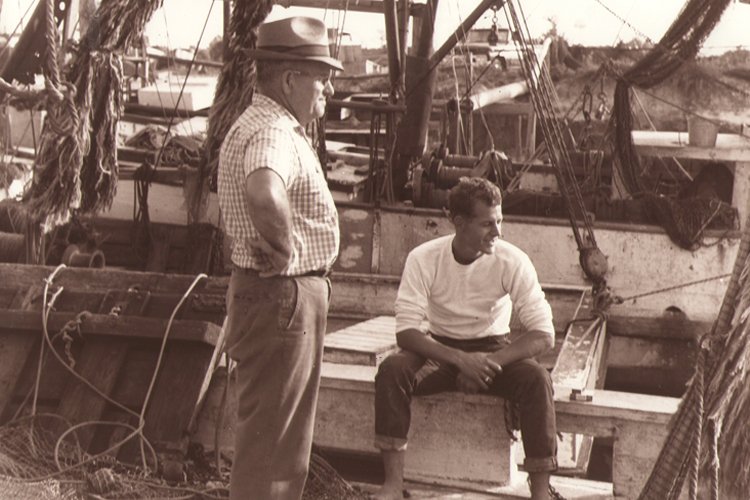
usa - Florida
wood’s fisheries wild american shrimp
Caught in a well-regulated fishery along the southeast and Florida Gulf coasts using the latest gear for bycatch reduction, there’s a Wood’s Fisheries Wild American and chem-free shrimp for whatever dish you have in mind — from mild whites to firm and sweet pinks and rich browns.
the shrimp
Whites (Penaeus setiferus) live in brackish water estuaries. They are mild in flavor, tender in texture, and extremely versatile.
Key West Pinks (Penaeus duorarum) are the perfect boiling shrimp. These easy peeling, firm shrimp are in the middle of the flavor spectrum. The shrimp thrive in the pink coral sand, which is how they get their bright color.
North Florida Hoppers (Penaeus duorarum) are the same species as pinks but are found off the Florida Panhandle in the high salinity waters of St. Joe Bay. They have a have a firm, crisp texture and bite with sweet ocean flavor.
Browns (Penaeus aztecus) are richer in flavor than mild white shrimp and are golden brown in color. Their rich flavor makes them a great match for bold flavors.
Once caught, Wood’s shrimp are frozen at sea in a saltwater brine to ensure peak freshness. The shrimp are processed naturally and are chem-free.
the fishermen
Since 1860, five generations of the Wood family have been landing shrimp in Port St. Joe, Florida on the Gulf coast. Today, the boats Wood’s works with are fishing from the Carolinas down around Florida and into the Gulf of Mexico and hold to a high standard of environmental stewardship and care for the product.
Boats are using bycatch reduction devices (BRD’s) and turtle excluder devices (TED’s) to reduce the catch of untargeted species caught in the nets, including vulnerable sea turtles. All boats shrimping for Wood’s must submit to annual gear inspections from NOAA and have bycatch numbers lower than the area average, down to 1:1.68 in their latest assessment.
Wood’s also limits drag time of the nets to two hours or less (as compared to six of seven hours used by some vessels) so that bycatch, like turtles, has a much higher chance of being removed from the net alive and safely put back in the water. Shorter drag times also ensure higher quality in the shrimp being harvested.
In the kitchen
There’s a wild US shrimp species for whatever dish you have in mind. Mild and tender white shrimp are suited to many applications and delicately flavored dishes. Key West pink shrimp and North Florida Hoppers peel easily, perfect for a shrimp boil. Brown shrimp have a richer flavor that stands up well to bold seasonings.
what makes a wild shrimp sustainable?
Stock Assessments and Management (are there enough shrimp in the water for healthy populations)
US stock assessments state that white, pink and brown shrimp fisheries have not been overfished and are not experiencing overfishing. US domestic fisheries are highly regulated for the sustainability of wild fish populations. Woods works actively with environmental NGOs on making their shrimping more sustainable all the time and the fishery is now starting the process to become certified by MSC, the Marine Stewardship Council.
Bycatch Reduction (species not being targeted that end up in the nets)
Historically, the biggest issue with shrimping has been high amounts of bycatch - the unintended species of fish and even sea turtles that can end up in shrimp nets, needlessly killed. US government agencies and the industry have worked hard to reduce numbers. Boats are using bycatch reduction devices (BRD’s) and turtle excluder devices (TED’s) to reduce the catch of untargeted species caught in the nets, including vulnerable sea turtles. All boats shrimping for Wood’s must submit to annual gear inspections from NOAA and have bycatch numbers lower than the area average, down to 1:1.68 in their latest assessment.
Drag Time (how long nets are in the water)
Wood’s limits drag time of the nets to two hours or less (as compared to six or seven hours used by some vessels) so that bycatch, like turtles, has a much higher chance of being removed from the net alive and safely put back in the water. Shorter drag times also ensure higher quality in the shrimp being harvested.
resources
Wood’s Fisheries website





